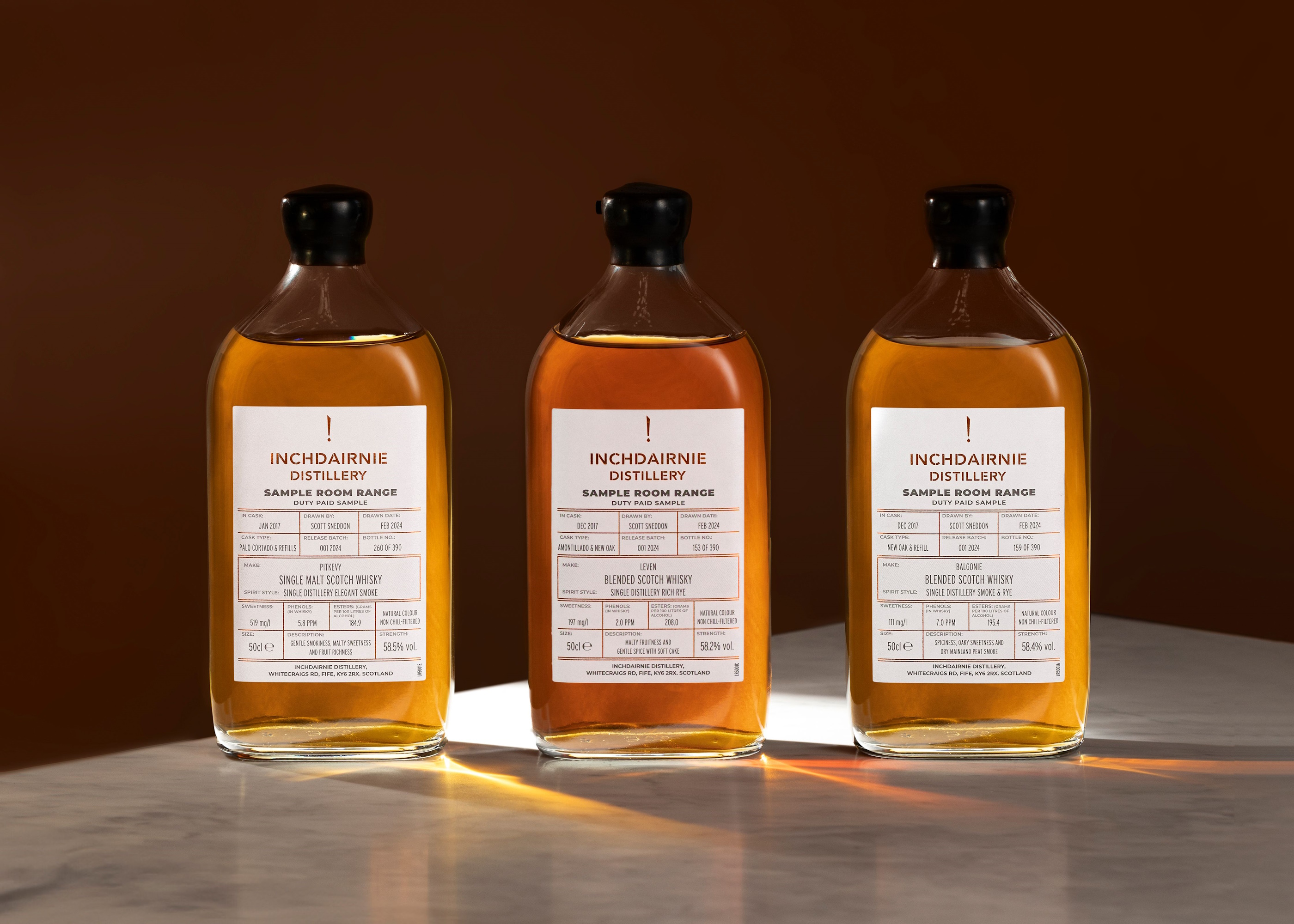InchDairnie on the offensive

Founded in 2015, riding the wave of immense popularity of Scotch whisky in recent years, the InchDairnie distillery is an all-around remarkable distillery. Instead of a traditional grinder and mash vat, the plant is equipped with a hammer shredder and mash filter, allowing easier experimentation with different types of grain, including rye. It is one of the first Scottish whisky makers to decide to produce rye whisky on a regular basis.
InchDairnie has just offered a series of three interesting whiskies from this very distillery. They are interesting in that they were each made entirely at a single distillery, even though two of them are referred to as "blended" on the label, which is not likely to happen very often. All three whiskies are limited editions, offered in a series called Sample Room Range. The set includes:
Pitkevy Single Malt Scotch Whisky (58.5% vol.) is a malt whisky, slightly peaty, matured partly in Palo Cortado sherry casks. This is the first peated whisky to come from InchDairnie.
Balgonie Blended Scotch Whisky (58.4% vol.) is a blended whisky, that is, a blend of malt and grain whiskies. In the case of Balgonie, we are talking about peated single malt whisky (26%) and rye (74%). Both whiskies were made at the InchDairnie distillery.
Leven Blended Scotch Whisky (58.2% vol.) is also a blended whisky. In this case, we are dealing with a 50/50 blend of rye whisky, produced in InchDairn, with single malt whisky matured in amontillado sherry casks.
The individual whiskies in the Sample Room Range are named after geographic names from the area around Glenrothes, where the distillery is located. There are small villages and a river flowing through the county of Fife. As for the region according to the SWA classification, InchDairnie is located in the northeastern part of the Lowlands.
What's unusual about the new whisky collection from InchDairnie is that the two blended whiskies included in it are products of a single distillery, something that almost never happens in the Scottish distilling industry. Blended whiskies are, in the vast majority of cases, distillates from several, a dozen or even dozens of distilleries - malt and grain - carefully selected and blended to achieve a specific aroma and flavor profile. Literally several times in the history of Scotch whisky we have had a similar phenomenon, when all the ingredients of a blended whisky came from the same distillery. They were sometimes referred to as "single blended whisky," as the "single" element in the term for the type of whisky refers to a single distillery.
Another interesting fact worth noting is that according to the strict regulations on the classification of Scotch whisky, any beverage that does not meet the requirements for "single malt whisky" is by definition referred to as "grain." Hence there is no "rye" whisky in the Scottish nomenclature, i.e. rye whisky. Hence, the aforementioned Balgonie formally consists of single malt and single grain whiskies. Even if the basic grain for this cereal is rye and it is all malted (malted).
It is also worth recalling in passing that Scotch whisky, regardless of the grade, must contain malted barley. Thus, even in the grain whisky charge, part of the grain used must be malted barley. Otherwise no Scotch whisky (Scotch whisky). And by law, no other whisky is allowed to be produced in Scotland.
So at first glance, you can see that InchDairnie is an unconventional distillery, where the definitions of whiskey and its production methods are even pushed to the very limits of legal acceptability. These drinks are simply worth trying.
Buying any of the three new whiskeys at retail means spending £59 a bottle.
[25.03.2024 / photo: InchDairnie]